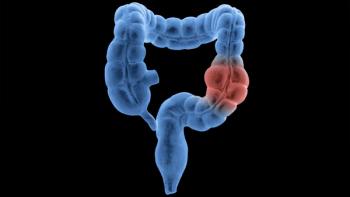
Breast Cancer Updates Are Changing Nurse Practice
With various FDA approvals in the last year alone, nurses must stay up-to-date on the changing treatment landscape of breast cancer to properly treat these patients.
With high incidence rates of breast cancer across the US — an estimated 268,600 new cases this year alone – nurses must stay up-to-date on the newest treatment options for this patient population, according to Madeline Kuiper, MSN, RN, OCN.
“What has recently changed in breast cancer? There is a lot going on at the moment,” said Kuiper, who is an oncology nurse practitioner at the University of California, Los Angeles. “A lot of this data has just come out of (the ASCO Annual Meeting), with a lot of great clinical trials that are actually changing our practices, and you’re going to start seeing that, particularly in the outpatient setting. However, you might have patients on these new therapies coming in to see you, so it’s a great idea to know about them.”
Breast Cancer Staging
One of the first things that has recently changed in the last 2 years is how the disease is being staged, with the addition of TNM staging, molecular characteristics (tumor grade and proliferation rate), and biomarkers (estrogen receptor, progesterone receptor, and human epidermal growth factor receptor 2 [HER2]).
“All of this now is either upgrading or downgrading patient staging. That is a key point to look at with our patients,” Kuiper said.
The stages of breast cancer consist of the following:
- Stage 0: Abnormal cells are present but have not spread to nearby tissue.
- Stage I (Early Stage): Cancer has spread to other tissue in small area.
- Stage II (Localized): Tumor is between 20 mm to 50 mm and some lymph nodes are involved or a tumor larger than 50 mm with no lymph nodes involved.
- Stage III (Regional Spread): Tumor is larger than 50 mm, with more lymph nodes involved across a wider region. In some cases, there is no tumor present at all. Cancer may have spread to skin or chest wall.
- Stage IV (Distant Spread): Cancer has spread beyond the breast to other parts of the body.
CDK4/6 Inhibitors
CDK4/6 inhibitors came into the treatment landscape starting in 2015 with palbociclib (Ibrance), followed by ribociclib (Kisqali) in 2017 and abemaciclib (Verzenio) in 2018 as a first-line treatment for postmenopausal women with hormone receptor (HR)-positive /HER2-negative metastatic breast cancer.
In the first trial dedicated to evaluating endocrine therapy with and without a CDK4/6 inhibitor, the MONALEESA 7 study showed an overall survival (OS) benefit for ribociclib with endocrine therapy in premenopausal patients with advanced breast cancer.
“We’re now looking at women who have not gone into menopause yet are high risk and haven’t had a lot of therapies set out for them. Now we have good data in the advanced breast cancer setting,” Kuiper said. “This really addresses an unmet need in premenopausal women, who have poorer prognoses and more aggressive cancer.”
Atezolizumab
On March 8, 2019, the FDA granted accelerated approval to atezolizumab (Tecentriq) in combination with nab-paclitaxel (Abraxane) for women with locally advanced or metastatic triple negative breast cancer, who have PD-L1 expression. In addition, the agency approved a companion diagnostic test, called VENTANA PD-L1 (SP142) Assay, looking at PD-L1 expression on the immune cells.
“Unfortunately, PD-L1 is also tested in lung cancer, but they use a different assay. So, part of my problem now is trying to find pathology departments who are using the right assay, so you get insurance approval so you can get your patient the drug. So, these are the little nuances that some of you working in clinics have to know about,” explained Kuiper.
The adverse events (AEs) associated with the drug combination, including alopecia, peripheral neuropathies, fatigue, nausea, diarrhea, anemia, constipation, cough, headache, neutropenia, vomiting, and decreased appetite. However, because the drug affects the immune system, Kuiper noted that nurses must be aware of AEs such as immune-mediated pneumonitis, hepatitis, colitis, and endocrinopathies; infections; and infusion-related reactions.
Alpelisib
On May 24, 2019, the FDA granted approval to alpelisib (Piqray) in combination with fulvestrant (Faslodex) for postmenopausal women and men with HR-positive, HER2-negative, PIC3CA-mutated advanced or metastatic breast cancer. Similar to atezolizumab, the agency approved a companion diagnostic, called the therascreen PIK3CA RGQ PCR Kit, to detect the mutation in a tissue and/or liquid biopsy.
“The recommendation is to use the assay through a blood test, and if that is negative, then you send the patient’s tumor for testing. The only problem is, when this came out, they hadn’t defined, designed or had access to the kit. So, don’t try to do blood tests because it is not available yet. So, again, this is something I’ve had to learn — how to get patients tested and access to this drug,” said Kuiper.
The most common AEs include increased glucose, increased creatinine, diarrhea, rash, decreased lymphocyte count, increased GGT, nausea, increased ALT, fatigue, decreased hemoglobin, increased lipase, decreased appetite, stomatitis, vomiting, weight loss, decreased calcium, prolonged APTT, and alopecia. Hypersensitivity and pneumonitis are 2 severe AEs nurses should be looking out for though, she added, saying that monitoring of drug interaction is also key.
“Look at the enzymes for all of your drugs, particularly all of your oral drugs, because patients are taking all sorts of stuff now. You have to be very careful because patients are either increasing their drug toxicity or decreasing its efficacy,” Kuiper said.
Talazoparib
On October 16, 2018, the FDA also approved the PARP inhibitor talazoparib (Talzenna) to treat patients with deleterious or suspected deleterious germline BRCA-mutated, HER2-negative locally advanced or metastatic breast cancer.
With this agent, nurses should be aware of AEs like fatigue, anemia, nausea, neutropenia, headache, thrombocytopenia, vomiting, alopecia, diarrhea, and poor appetite, as well as severe AEs such as myelodysplastic syndromes/acute myeloid leukemia, myelosuppression, and fetal harm.
“(If you need a reference), visit the NCCN guidelines because they are regularly updated with good evidence to support it, and will take you in the direction where you can make these changes in your practice,” Kuiper said.
Newsletter
Knowledge is power. Don’t miss the most recent breakthroughs in cancer care.
























































































